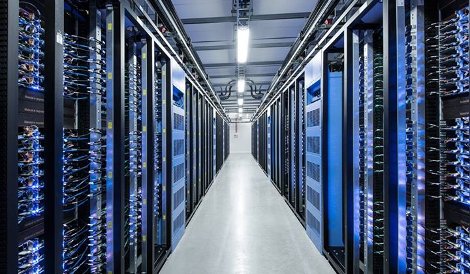Facebook's data centers consumed about 678m kWh of energy in 2012 – up from 509m kWh they consumed the year before – the company reported this week in the latest annual report on its energy use and associated carbon emissions.
The increase is a result of a massive expansion of data center capacity the company has undertaken to support the skyrocketing growth of its user base.
In addition to adding a new data center in Lulea, Sweden, in 2012, the company's data center in Prineville, Oregon, went from consuming 71m kWh in 2011 to 153m kWh in 2012. The energy consumption of its Forest City, North Carolina, facility went from 6m kWh in 2011 to 98m kWh in 2012.
There have been changes in energy consumption at the data centers Facebook leases as well.
Its colocation facility on the US East Coast consumed 237m kWh in 2012 – up from 205m kWh the year before. Leased data center on the West Coast went from 227m kWh in 2011 down to 185m kWh in 2012.
In its energy-use report for 2011, Facebook said it would be a difficult journey to reducing its reliance on unsustainable energy sources because of the large footprint it has in leased facilities, where it has no say in the choice of energy providers.
The mix of fuels used to generate energy Facebook used in 2012 consisted of 34% coal, 22% nuclear, 19% renewable, 15% natural gas and 10% “uncategorized,” or power the company bought on the spot market, not knowing exactly how it was generated.
The percentage of renewables in the mix has declined from last year's report, and the company had anticipated. Its goal is to get to 25% renewable by 2015, and expects the new hydro-powered Lulea, Sweden, data center to contribute a lot to that goal as the amount of traffic it serves ramps up.
The amount of carbon emissions that result from one person using Facebook for a year has changed only slightly (from 249 grams in 2011 to 294 grams). These associated emissions still equate with emissions related to production of a few glasses of wine, three or four bananas or a latte.
Since last year's report, Facebook has figured out a better way to measure greenhouse gas emissions from electricity it buys. Instead of using emission averages from different locations provided by US and international officials, the company is now using emission factors it gets directly from its electricity suppliers.
The difference turned out to be huge.
Using the older method to calculate emissions associated with Facebook's Prineville, Oregon, data center put the emission volume at 58,000 metric tons of greenhouse gases. The figure ballooned to 104,000 MT when the new method was used.
The difference was big in emission calculations for other locations, but not as big as it was for Prineville. In Forest City, North Carolina, for example, the number went from 47,000 MT down to 41,000 MT.
The old method showed that Facebook's colocation footprint on the East Coast resulted in 112,000 MT of greenhouse gases, a figure that went up to 117,000 MT after the new method was applied.

